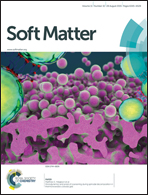Nuclear stiffening and chromatin softening with progerin expression leads to an attenuated nuclear response to force†
Abstract
Progerin is a mutant form of the nucleoskeletal protein lamin A, and its expression results in the rare premature aging disorder Hutchinson-Gilford progeria syndrome (HGPS). Patients with HGPS demonstrate several characteristic signs of aging including cardiovascular and skeletal dysfunction. Cells from HGPS patients show several nuclear abnormalities including aberrant morphology, nuclear stiffening and loss of epigenetic modifications including heterochromatin territories. However, it is unclear why these changes disproportionately impact mechanically-responsive tissues. Using micropipette aspiration, we show that nuclei in progerin-expressing cells are stiffer than control cells. Conversely, our particle tracking reveals the nuclear interior becomes more compliant in cells from HGPS patients or with progerin expression, as consistent with decreased chromatin condensation as shown previously. Additionally, we find the nuclear interior is less responsive to external mechanical force from shear or compression likely resulting from damped force propagation due to nucleoskeletal stiffening. Collectively our findings suggest that force is similarly transduced into the nuclear interior in normal cells. In HGPS cells a combination of a stiffened nucleoskeleton and softened nuclear interior leads to mechanical irregularities and dysfunction of mechanoresponsive tissues in HGPS patients.


 Please wait while we load your content...
Please wait while we load your content...